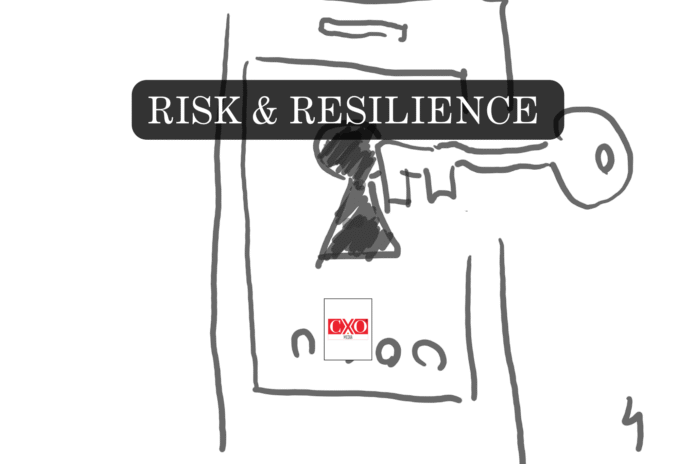The Imperative of Blending Human Expertise and AI
In the modern digital arena, where cybersecurity threats evolve with alarming speed and complexity, the integration of human insight and artificial intelligence (AI) within cybersecurity frameworks is not just a benefit—it’s a necessity. Atif Najam, Chief Information Officer at Gatron Novatex, champions this integrated approach. He stresses the importance of a cybersecurity paradigm that not only leverages cutting-edge AI technologies but also fosters an environment of heightened security awareness among users. This holistic strategy is crucial as we tread through the intricate terrain of digital transformations.
“At the heart of modern cybersecurity strategies, the fusion of AI with human vigilance is not merely a supplementary enhancement but the very backbone of our defenses,” remarked Najam at a recent industry conference. His vision highlights an essential strategy: while AI can process and analyze data at speeds and volumes beyond human capabilities, the nuanced insights and ethical judgments of humans are irreplaceable. Humans understand context, moral implications, and the subtleties of human behavior—factors that are vital for effective cybersecurity measures. Moreover, Najam emphasizes the role of continuous education and proactive security practices among all digital users. AI technologies, while powerful, require proper handling and understanding to be fully effective. Misconfigurations and inadequate user settings can easily turn these advanced tools into liabilities. Therefore, a significant part of integrating AI into cybersecurity involves training users not just to utilize these tools, but to understand their functions deeply. This comprehensive approach ensures that AI acts as an enhancer of human skills rather than a substitute, leading to a more resilient digital infrastructure.
Navigating Ethical Waters: The Role of Training and AI
The ethical deployment of AI in cybersecurity hinges on a well-established framework of integrity and confidentiality. Saiyed Shahab Ahmed, a recognized cybersecurity expert, illuminates the significance of foundational cybersecurity training in shaping this framework. “In the realm of cybersecurity, simple mistakes—such as weak passwords or unsecured personal devices—can unwittingly open the floodgates to cyber predators, leading to disastrous consequences,” Ahmed points out. This perspective underlines the critical need for basic but comprehensive cybersecurity education as a primary defense mechanism against cyber threats.
Training in cybersecurity not only equips individuals with the necessary tools to defend against attacks but also instills a robust ethical understanding that guides their interactions with technology. As AI systems become more autonomous, the potential for misuse or unintended consequences increases unless users are well-versed in ethical practices and understand the implications of AI actions.
Adding to the complexity is the need to balance AI’s capabilities with essential human oversight, as highlighted by Aftab Nehal, CIO at Leopards Courier. “AI’s ability to streamline workflows, enhance data analysis, and predict trends is undeniable. However, it lacks the innate human capacity to contextualize and empathize, which are crucial when handling sensitive information,” Nehal explains. His insights advocate for a balanced approach where AI supports data handling and analysis but human judgment prevails in critical decision-making processes, especially where ethical considerations are concerned. This dual approach—leveraging AI for its processing prowess while relying on human judgment for ethical and contextual decision-making—creates a dynamic cybersecurity environment. It ensures that technology’s reach enhances security without compromising ethical standards. As AI continues to evolve and integrate deeper into our security frameworks, the focus must remain on refining these balances, ensuring that AI serves as a tool for human decision-makers, not a replacement. This approach not only mitigates risks but also aligns with broader ethical standards that must govern our digital and real-world interactions.
A Call to Responsible Action
The journey towards a secure digital future is indeed continuous, requiring unwavering dedication to education, ethical training, and the integration of cutting-edge technologies in a responsible manner. As we harness the power of artificial intelligence (AI) in cybersecurity, we face the dual challenge of advancing our technological capabilities while steadfastly upholding ethical standards. The insights from cybersecurity leaders like Atif Najam, Saiyed Shahab Ahmed, and Aftab Nehal coalesce around a pivotal theme: the indispensable role of human oversight in the AI-driven landscape. This consensus is not just a guideline but a resolute call to action for all participants within the digital ecosystem to actively engage in perpetual learning and to maintain high ethical standards throughout the deployment of AI technologies.
AI, with its unparalleled efficiency in data processing and anomaly detection, offers significant advantages in identifying potential threats and enhancing security protocols. However, its integration into security frameworks must be navigated with a deep understanding of ethical implications and a commitment to human-centered decision-making. By embedding ethical considerations into the development and deployment of AI systems, we can prevent biases, ensure privacy, and foster trust among users.Moreover, the need for comprehensive training cannot be overstressed. Education in cybersecurity should not only focus on technical skills but also on ethical decision-making and the societal impacts of AI. This holistic approach will prepare individuals not only to utilize AI effectively but to question and refine the algorithms that shape their operations. In doing so, cybersecurity professionals can ensure that AI systems perform as intended and support fairness, accountability, and transparency.
The collaborative effort between humans and AI in cybersecurity also highlights the importance of a diverse and inclusive environment where multiple perspectives foster innovation and ethical vigilance. By drawing on a wide range of experiences and viewpoints, we can better anticipate and mitigate the complex challenges that arise at the intersection of technology and ethics. This balance between human expertise and AI capabilities offers a promising path forward. By nurturing a culture of ethical awareness and investing in robust training programs, we can leverage the strengths of both realms to forge a more secure and resilient digital infrastructure. Our commitment to this path must be firm, recognizing that our collective security hinges on our ability to adeptly balance these powerful forces. Let us therefore commit to a future where technology and humanity converge to enhance security, uphold values, and protect our digital and physical realms. Engaging in continuous dialogue, refining ethical standards, and promoting a deep understanding of AI’s role in cybersecurity are essential steps toward this goal. Through concerted efforts and shared responsibilities, we can achieve a cybersecurity landscape that is not only effective but also principled and just, safeguarding our digital world for generations to come.





